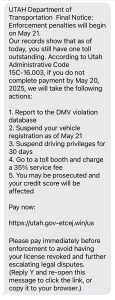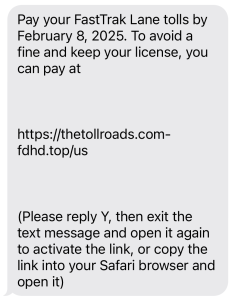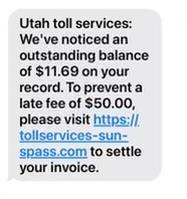Local Government Program Assistance
Local Public Agency (LPA) projects have the same priority to UDOT as state projects. UDOT and LPAs are partners in the successful completion of LPA projects.
B&C Road Fund Information
Allocation of B&C Road Funds and Annual Rural Transportation Infrastructure Funds (RTIF)
Weighted Mileage Detail are available for viewing or download. The funds allocation reports are arranged by fiscal year.
- Administrative Rule R926-3; Class B or Class C Road Funds
- Class B and Class C Roads Apportionment Formulas
- Appendix
- STP Non-Urban Funds – Areas less than 5,000 population (Programmed through 2027)
- TAP Small Urban Funds – Areas between 5,000 & 50,000 population (Program closed)
- TAP Non-Urban Funds – Areas Less than 5,000 population (Program closed)
- State Park Access Funds – Facilities accessing State Parks* (Programmed through 2027) * Must be one of several specific facilities identified in Utah Code, 72-3-202 through 72-3-206.
- Off-System Bridge Funds – Bridges on local/rural minor collector roads (Programmed through 2027)
- STP Small Urban Funds – Areas between 5,000 & 50,000 population (Programmed through 2026)
- Future needs based on growth and land use
- Existing utility facility age, composition, condition and capacity
- Management of traffic and access, including parallel, connecting and cross street operations
- Potential safety, pedestrian and aesthetic enhancements
- Communication and planning with Local Agencies at the earliest possible opportunity will allow the successful incorporation of betterment work into highway projects.
- Cache Metropolitan Planning Organization
- Wasatch Front Regional Council
- Mountainland Association of Governments
- Dixie Metropolitan Planning Organization
FY2019 Allocations
FY2018 Allocations
FY2017 Allocations
FY2016 Allocations
FY2015 Allocations
FY2014 Allocations
FY2013 Allocations
FY2012 Allocations
FY2011 Allocations
FY2010 Allocations
The Class B & C road system with a funding program was established by the Utah Legislature in 1937 as a means of providing assistance to counties and incorporated municipalities for the improvement of roads and streets throughout the state.
The Funds differ from ordinary local revenues inasmuch as they are subject to administrative direction by the State in accordance with legislative provision. The Utah Department of Transportation is the administrative authority on behalf of the State.
Rule R926-3 designates those regulations which are acceptable to the Utah Department of Transportation (UDOT) in the administration of funds for counties, cities, and towns provided for by the Utah Legislature. The Appendix includes the Statutory Provisions relating to “B” & “C” Road Funds.
Update of Mileage Used for Allocation of Class B & C Road Funds
It is the responsibility of counties and municipalities to update their Class B or C mileage with UDOT when any changes have occurred. UDOT cannot add new road mileage to the system without first receiving proper documentation from the local agency to place on file.
Please fold maps and mail in standard mailing envelope to address at the bottom of form. If map needs to be sent in a larger package, please mail to:
Warehouse – Chris Potter – UDOT Program Development
4503 S. 2700 W.
Taylorsville, UT 84129-5928
Class B & C mileage can be updated by each entity as often as once per year. Changes will be made in the next bi-monthly allocation executed after the documentation is received by UDOT.
Flexible Match for Federal-Aid Project
Flexible Match for Federal-Aid Project
Listed below are the Flexible Match Approval Guidelines and Flexible Match Approval Form.cpotter@utah.gov
Joint Highway Committee
Joint Highway Committee Programs
Several types of federal funds are allocated to Utah each year by congress for use on transportation facilities in the rural and small urban areas of the state. In addition to these funds, specific dollars are also set aside for bridges on the local system in all areas of the state.Funds
The Joint Highway Committee administers the following specific highway funds:New project applications are received from local government sponsors each year. The application form can be accessed at the following link.
Submit applications to UDOT by the second Friday in January.
Local Public Agency Guide
Local Public Agency Guide
The Utah Department of Transportation has stewardship over local government projects that receive Federal Aid. To assist Local Government agencies, the guides and manuals shown below are provided.Chris Potter, UDOT Local Government Program Engineer
cpotter@utah.gov
(801) 633-6255
Betterment Guidelines
Betterment Guidelines
Use the Betterment Agreement Form when a local agency requests that betterment work be included in a Local Government or UDOT project. Refer to the Guidelines below for planning and administering betterment work and completing betterment agreements.Planning Guidelines for Betterment Work
Discussions about potential betterments should be held with Local Governments or Local Agency Stakeholders early in the planning and concept phases of highway projects. The early identification of potential betterment opportunities gives Local Agencies time to secure funding or budget for the betterment work, and insures that the work becomes part of the project scope from the beginning. The opportunity to update aging utility facilities, increase capacity to anticipate future growth, improve mobility, safety and aesthetics in conjunction with the construction of highway projects is a benefit to the Local Agency as well as UDOT. Performing betterment work concurrently with highway work provides cost efficiencies for the Local Agencies, and helps insure that newly constructed or reconstructed highways are not impacted by local utility and roadway projects for many years to come. The incorporation of Local Agency betterment work into highway projects should be encouraged and accommodated, provided that the work does not interfere with the project delivery schedule during design or construction.Comptroller’s Office Guidelines for the use of Betterment Agreements
The following guidelines have been issued by the UDOT Comptroller’s Office (May 4, 2009) on the processing of betterment agreements. These guidelines have been issued in response to an increasing number of questions relating to local agency deposits.Design and Construction Guidelines for Betterment Work
Local Agency Betterment work is incorporated into highway project contracts in different ways. Betterment work may be designed by UDOT or its consultants, or the work may be designed by the Local Agency or its consultants and incorporated into UDOT’s contract. Betterment work designs should be planned and developed to be compatible with the roadway design as well as the existing and relocated facilities belonging to other third parties. Local Agency Standards and Specifications can be included in UDOT’s contract documents.cpotter@utah.gov
Safe Sidewalk Program
Safe Sidewalk Program
The Utah State Legislature recognizes the need for adequate sidewalk and pedestrian safety amenities and state policy affirms the need to include pedestrian safety considerations for all projects where foot-travel is a significant factor. The Safe Sidewalk Program provides a legislative funding source for construction of new sidewalks adjacent to state routes where sidewalks do not currently exist and where major construction or reconstruction is not planned for ten or more years.Transportation Alternatives Program (TAP)
Transportation Alternatives Program (TAP)
These funds are available for transportation alternatives projects like pedestrian and bicycle facilities, recreational trails, community improvements such as historic preservation and vegetation management, and environmental mitigation related to stormwater and habitat connectivity.Safe Routes to School (SRTS) Program
Safe Routes to School Program
There is growing concern in Utah and nationally about the safety of children who walk or bike to school. With increased traffic congestion around schools, students who choose to walk or bike have limited safe routes, which discourages this healthy activity.Maintenance Responsibilities
Maintenance Responsibilities
Maintenance Responsibilities at Intersections and InterchangesChris Potter, UDOT Local Government Program Engineer
cpotter@utah.gov



